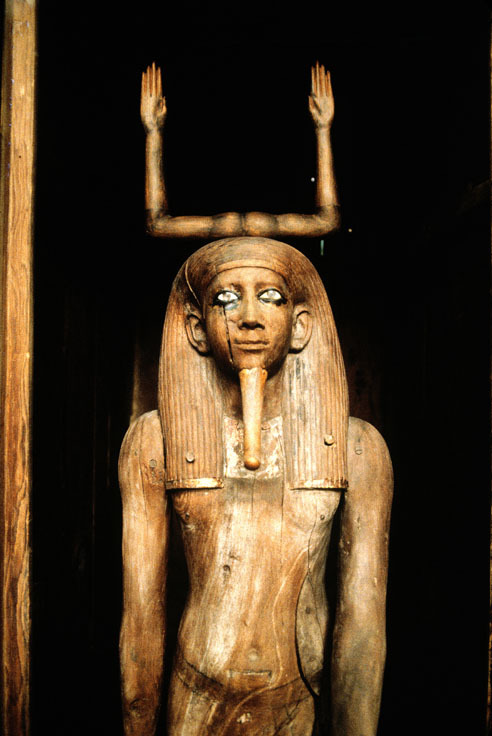Ka
A spirit that inhabits the body during life and may leave it in death, but requires the continued existence of the body (hence mummification or, by substitution, Ka statues) for its survival.

This statue was excavated in 1894 in the tomb of king Hor that was found by a team of excavators under the direction of Jacques de Morgan. The tomb is located north of the pyramid complex of Amenemhat III at Dahshur.
The wooden structure is a magnificent, well-preserved masterpiece. It depicts the Ka statue of King Hor I (Au-ib-Re), which is clearly marked by the Ka hieroglyphic sign as two upraised arms topping the head. The Ka, or guardian spirit, had to survive in the statue to keep its owner alive.
The statue, found within its accompanying naos, or shrine, was covered with a fine layer of painted stucco. The king is sculpted wearing a three-part long wig, leaving the ears exposed. He wears a long, curved divine beard.
It is noteworthy that the sculptor successfully modeled the inlaid eyes to lend a lifelike appearance to this expressive face. The eyes are inlaid with rock crystal and quartz. It seems that the Ka statue once held a scepter in its right hand and a staff in its left hand. The statue of the king was fixed to a wooden panel that could be taken out of the naos.
See all posts in Glossary
Upcoming Tours
We would love to walk with you in the Holy Land. Here are upcoming opportunities:
Jun 27 — Jul 09, 2024 Egypt & Jordan Walking Tour (easy pace)Led by George DeJong |
All trip dates subject to change.